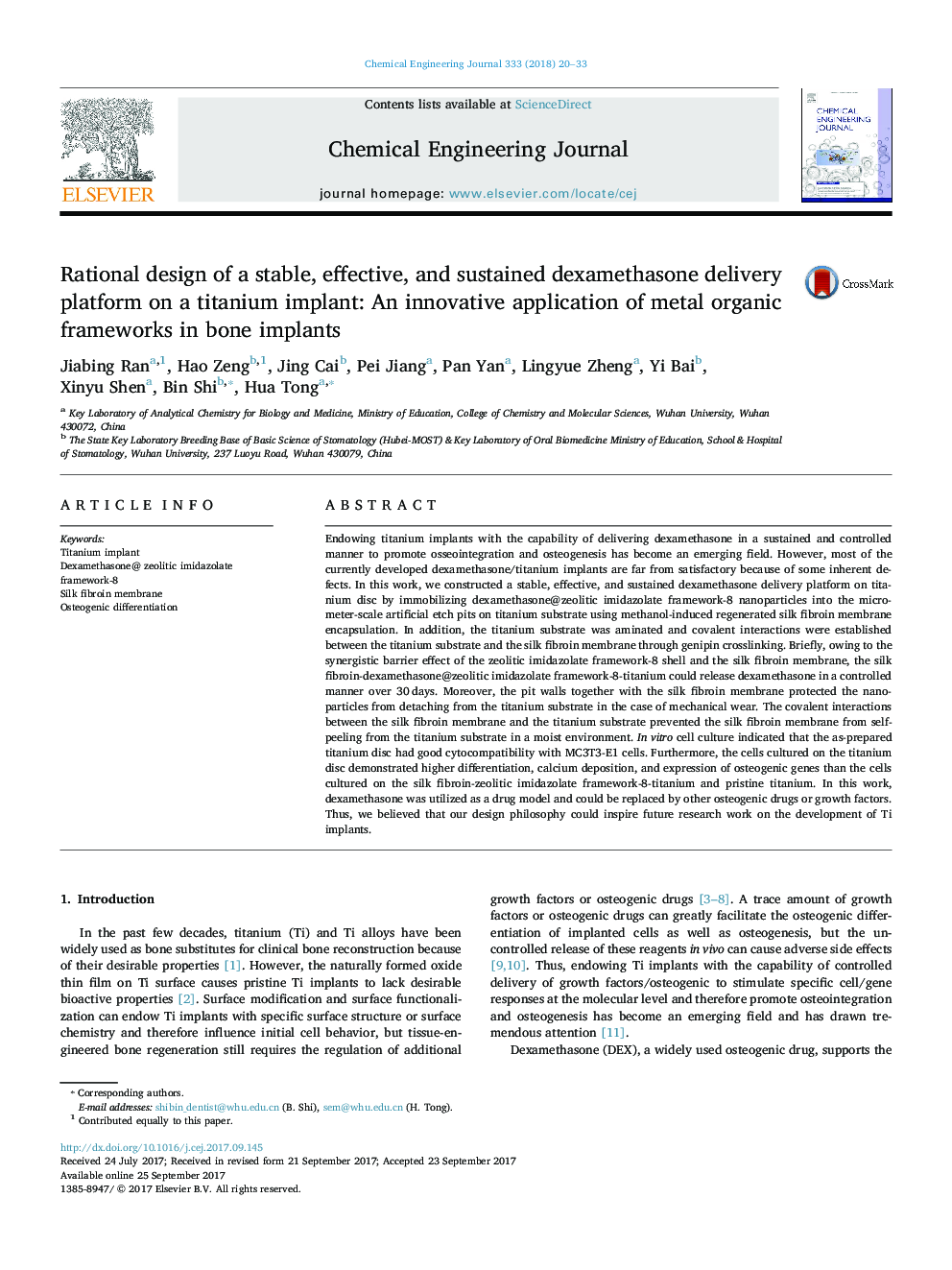| Article ID | Journal | Published Year | Pages | File Type |
|---|---|---|---|---|
| 4762702 | Chemical Engineering Journal | 2018 | 14 Pages |
Abstract
Endowing titanium implants with the capability of delivering dexamethasone in a sustained and controlled manner to promote osseointegration and osteogenesis has become an emerging field. However, most of the currently developed dexamethasone/titanium implants are far from satisfactory because of some inherent defects. In this work, we constructed a stable, effective, and sustained dexamethasone delivery platform on titanium disc by immobilizing dexamethasone@zeolitic imidazolate framework-8 nanoparticles into the micrometer-scale artificial etch pits on titanium substrate using methanol-induced regenerated silk fibroin membrane encapsulation. In addition, the titanium substrate was aminated and covalent interactions were established between the titanium substrate and the silk fibroin membrane through genipin crosslinking. Briefly, owing to the synergistic barrier effect of the zeolitic imidazolate framework-8 shell and the silk fibroin membrane, the silk fibroin-dexamethasone@zeolitic imidazolate framework-8-titanium could release dexamethasone in a controlled manner over 30Â days. Moreover, the pit walls together with the silk fibroin membrane protected the nanoparticles from detaching from the titanium substrate in the case of mechanical wear. The covalent interactions between the silk fibroin membrane and the titanium substrate prevented the silk fibroin membrane from self-peeling from the titanium substrate in a moist environment. In vitro cell culture indicated that the as-prepared titanium disc had good cytocompatibility with MC3T3-E1 cells. Furthermore, the cells cultured on the titanium disc demonstrated higher differentiation, calcium deposition, and expression of osteogenic genes than the cells cultured on the silk fibroin-zeolitic imidazolate framework-8-titanium and pristine titanium. In this work, dexamethasone was utilized as a drug model and could be replaced by other osteogenic drugs or growth factors. Thus, we believed that our design philosophy could inspire future research work on the development of Ti implants.
Related Topics
Physical Sciences and Engineering
Chemical Engineering
Chemical Engineering (General)
Authors
Jiabing Ran, Hao Zeng, Jing Cai, Pei Jiang, Pan Yan, Lingyue Zheng, Yi Bai, Xinyu Shen, Bin Shi, Hua Tong,
